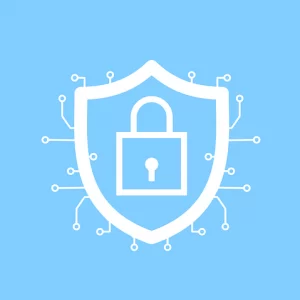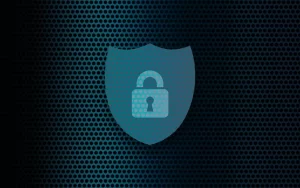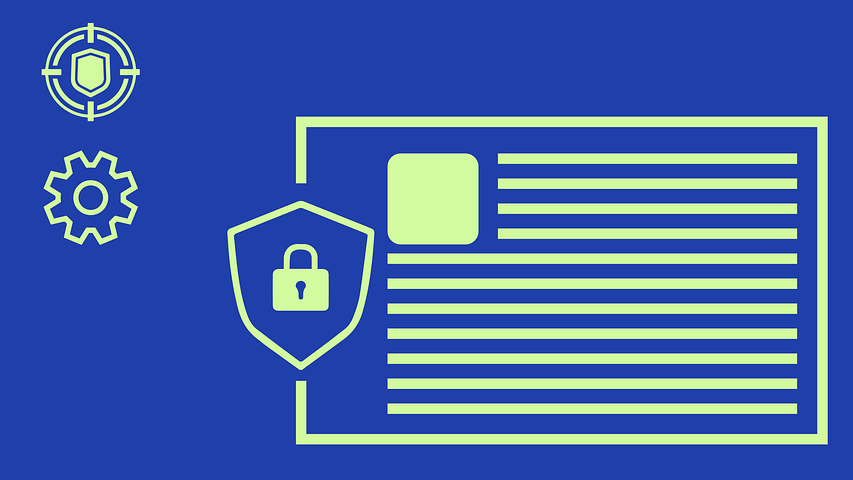The world of IT security can be complicated, but it doesn’t have to be. While it may seem like a field that only experienced professionals can navigate, anyone can make use of even the most basic security measures. That’s why we’ve put together this simple guide to get you started on the right foot with your computer and IT security needs—all while saving you time and money!

The Importance of Cybersecurity
Cybersecurity is a field that has gained more importance as hacking attacks have become more frequent. Cyber criminals are increasingly becoming more sophisticated, leaving businesses vulnerable to cyberattacks. The best way to protect yourself from being a victim of cybercrime is through cybersecurity. It’s important for beginners to understand how cybersecurity works in order to create a better future for themselves. For small-scale companies where security systems may not be at their optimal levels, simple measures like adding two-factor authentication can be very effective in keeping potential attackers at bay. On top of defending against hackers, cybersecurity also protects companies against other dangers such as data theft and natural disasters. A strong cybersecurity system allows you to track anything suspicious on your network, thus helping prevent large scale hacks on your system or stolen customer information. Thus cybersecurity is an essential part of any business setup that needs to be taken into consideration by both beginners and experts alike. No matter what type of company you are running, cybersecurity is vital to maintaining its integrity and smooth operations. Once again computer security should never be underestimated!
Smaller companies have fewer resources than larger corporations, but it is no excuse for not having a proper security system in place. It may not be as advanced or extensive as more expensive systems, but nevertheless it’s better than no protection at all. Having strong cybersecurity will keep your company running safely, which is crucial in today’s competitive business environment. Smaller businesses can opt for a budget computer security system or choose to outsource their security needs. Regardless of whether you create your own cybersecurity program or rely on an outside service, putting something into practice is better than nothing at all. If you take steps to improve your computer security even slightly, chances are that you’ll find yourself safe from cyber attacks! Cybersecurity doesn’t stop there – make sure that you protect yourself and your customers by always keeping up-to-date with any new developments regarding data breaches and hacking incidents; essentially stay one step ahead of cyber criminals by educating yourself about cybersecurity!

26 Steps To Computer And IT Security
If you use a computer, chances are you have something valuable on it—like personal documents or photos, work-related files, or banking information. Protecting your computer from security threats is very important in today’s world. Here are five steps you can take to keep your computers safe;
1. Use anti-virus software: Download a reputable anti-virus program, scan your computer for viruses at least once per week, and delete anything you find.
2. Install an anti-spyware program: Anti-spyware programs help protect against malicious software that spies on what you do online.
3. Install a firewall: A firewall keeps unauthorized users (and malware) out of your computer while allowing authorized users to access it
4. Make sure you’re running current versions of applications
5. Change your passwords regularly
6. Back up your data! Some experts recommend doing full system backups about once a month; others suggest backing up only those files that aren’t stored elsewhere
7. Set permissions for shared folders
8. Keep all operating systems and applications updated
9. Do not open unexpected email attachments
10. Only open attachments if you know who sent them
11. Do not store personally identifiable information in email
12. Don’t forget your mobile devices
13. Turn off Bluetooth when not using it
14. Don’t leave your device unattended
15. Use strong passwords
16. Enable file encryption
17. Encrypt external drives
18. Utilize anti-phishing technology
19. Store documents offline
20. Keep sites like MySpace and Facebook private
21. Be alert to identity theft
22. Never leave your credit card/bank statements on your desk or in a file cabinet without locking it
23. Never write down passwords on sticky notes and leave them on your computer monitor or keyboard for everyone to see (even if you have a password lock)
24. Never share logins with others and don’t use easily guessed passwords like 123456 or password especially if you have to remember it! If someone guesses your password, they can gain access to all of your online accounts
25. Do not store any personal information online unless you are protecting it with two-factor authentication
26. Keep your computers updated and follow best practices to protect yourself from attacks;

Protect yourself from phishing scams;
Phishing scams are designed to trick users into handing over sensitive information. All too often, they’re successful. Phishing emails will ask you for your username and password or ask you to enter your credit card number online. These requests should never be trusted, no matter who sent them, so don’t click any links in phishing emails; just delete them immediately. If you ever have a doubt about whether an email is legitimate, contact whomever it claims to represent directly by calling their offices and asking about it. And don’t open attachments if you aren’t sure what they contain: sometimes these files include viruses that can infect your computer system. To protect yourself from these types of attacks, it’s critical to practice good cyber security habits. Make sure you know how to log out of all devices when you leave them unattended (and even when you think they might not be), and follow basic internet safety rules like keeping your login details private; don’t write them down anywhere! It may also help to use different passwords on each site—this way if one gets hacked then the others might still remain secure.
Stay Updated On The Latest Threats
The best way to combat a threat is by staying updated on it. It’s important that you frequently check security news sites, along with your network logs, to make sure nothing suspicious is going on in your system. There are many free services online that can help you stay up-to-date on current threats. Companies such as Kaspersky Lab offer additional support if necessary. Additionally, you should follow all updates for Microsoft products immediately when they become available. Make sure everyone else in your company or organization has regular contact with them so there are no holes or vulnerabilities that could be exploited for malicious purposes later on.
Today’s Advanced Threats Target: Because of today’s advanced forms of malware, most computer and IT security threats target companies rather than individuals at home. These can range from remote access trojans (RAT) – software used by hackers to control compromised computers – all the way up to more complex threats like zero-day attacks which use vulnerabilities that have not yet been patched for attack. These types of attacks are often blocked by endpoint protection services but do your due diligence before investing in any type of protection service. Malware has grown into a multi-billion dollar industry over the past decade. Every form is different and there is no real one size fits all solution so it is important to conduct thorough research on each one when developing your plan. Keep in mind that there will always be newer forms of malware released onto unsuspecting consumers or businesses so you need to pay close attention at all times if you want to keep them safe. The only time you will ever feel secure about your network is if you are proactive about finding and destroying threats before they affect anyone else.

Incorporate Two-Factor Authentication Into All Online Accounts
There are three main types of identification when it comes to security: what you know (like a password), what you have (like an ID card), and what you are (like a fingerprint). You can use two-factor authentication, or 2FA, as it’s called, to add a second method of proving your identity on top of your password. The idea is that even if hackers get hold of your login details, they won’t be able to access your account without also having something you have—your phone, for example. Two-factor authentication isn’t something that everyone needs in order to protect their online accounts—many services will require only one factor in order for users to log in—but it makes sense for some accounts like email providers and banks where financial information is shared. Popular services such as Gmail offer free 2FA through apps like Google Authenticator; there are many other offerings available for mobile devices and desktop platforms alike. If any service you use doesn’t provide its own form of two-factor authentication, it’s probably worthwhile getting a separate app that generates codes every 30 seconds so you don’t have to remember anything at all. From there, make sure that it’s activated everywhere you need it to be. Note: We advise against using SMS-based 2FA if possible because text messages sent over regular cell phones can often be read by others if sent unencrypted. This could expose important login credentials to anyone who might want them. However, SMS support may still be worth considering depending on how much privacy or convenience you’re willing to sacrifice for extra protection against unauthorized logins. For instance, Google sends verification codes over both cellular data and Wi-Fi connections to your primary device whenever possible. SMS is then used as a backup option when there aren’t any nearby cell towers or Wi-Fi hotspots. Other companies give customers more granular control over which devices receive which type of confirmation code, but most people should find adequate peace of mind from using at least one form of 2FA across multiple forms of communication. Of course, those looking for additional methods of protection beyond signing up for new accounts with 2FA enabled may wish to consider installing firewalls and anti-virus software on all computers connected to a home network. That way, even if someone does manage to hack into your PC remotely, he or she won’t be able to spread infections to any additional computers you’ve got set up in another room.
